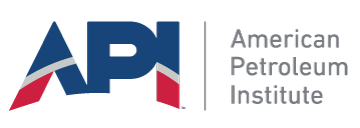The American Petroleum Institute (API) released the following statement from Senior Vice President and General Counsel Ryan Meyers after filing a petition today challenging the Biden administration’s 2024-2029 National Outer Continental Shelf Oil and Gas Leasing Program:
 “Demand for affordable, reliable energy is only growing, yet this administration has used every tool at its disposal to restrict access to vast energy resources in federal waters. In issuing a five-year program with the fewest lease sales in history, the administration is limiting access in a region responsible for generating among the lowest carbon-intensive barrels in the world, putting American consumers at greater risk of relying on foreign sources for our future energy needs. Today, we are taking action to challenge this shortsighted program so that future generations of Americans will continue to benefit from our energy advantage for decades to come.”
“Demand for affordable, reliable energy is only growing, yet this administration has used every tool at its disposal to restrict access to vast energy resources in federal waters. In issuing a five-year program with the fewest lease sales in history, the administration is limiting access in a region responsible for generating among the lowest carbon-intensive barrels in the world, putting American consumers at greater risk of relying on foreign sources for our future energy needs. Today, we are taking action to challenge this shortsighted program so that future generations of Americans will continue to benefit from our energy advantage for decades to come.”
For 45 years, the Interior Department has been required to prepare and maintain a five-year program that will best meet America’s energy needs for the ensuing five-year period, detailing a schedule for regular oil and natural gas lease sales, including in the Gulf of Mexico. For the first time the U.S. Department of the Interior released the final five-year program for federal offshore leasing, nearly 500 days late.
Interior’s final five-year program outlined a maximum of three potential oil and gas lease sales – the fewest oil and gas lease sales in a five-year program in history – in the Gulf of Mexico Program Area scheduled in 2025, 2027 and 2029. 2024 will be the first year since 1966 without an offshore lease sale.
According to the U.S. EIA, Gulf of Mexico federal offshore oil production accounts for 15% of total U.S. crude oil production and federal offshore natural gas production in the Gulf accounts for 2% of total U.S. dry production. A report from NOIA conducted by ICF found that the U.S. Gulf of Mexico produces some of the lowest carbon intensity barrels in the world. Constrained production in this basin could be replaced by higher carbon intensity barrels from elsewhere in the world.


